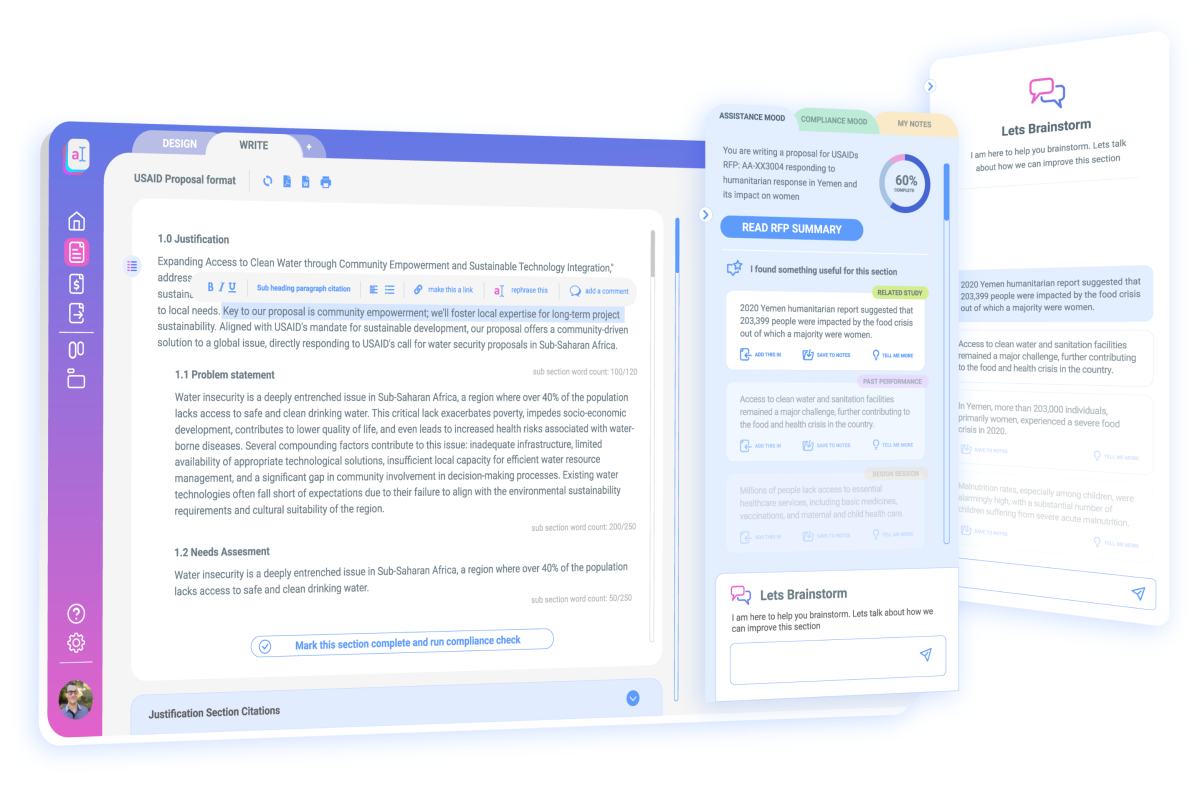In the world of non-profit organizations and community-driven AI initiatives, securing grants is essential for survival. However, the traditional process of grant proposal writing can be an arduous and resource-intensive endeavor, often requiring specialized grant writers and significant financial investments, which restrict the accessibility of grants to a limited pool of applicants.
Sean Carroll, the former chief of staff and COO of the U.S. Agency for International Development (USAID), understands the complexities involved in grant writing all too well. During his tenure at USAID, he oversaw the allocation of billions of dollars in grants.
Recognizing the need for a more efficient approach, Carroll, in collaboration with Mustafa Hasnain, the founder of Creative Frontiers, Syed Murtaza, an ex-corporate banker, and Gilberto Lopez, a Harvard academic, established Grant Assistant. This innovative platform harnesses the power of artificial intelligence (AI) to aid grant writers in various aspects of their work.
It’s important to note that Grant Assistant is not designed to replace professional grant proposal writers but rather to augment their abilities. Most document creation tools offer a blank canvas for users to start from scratch. In contrast, Grant Assistant employs a questionnaire that resembles the kind of inquiries a project consultant might pose. This questionnaire informs an AI-generated draft of the grant proposal, effectively guiding the writer through the process.
Furthermore
Grant Assistant includes a “suggestion engine” that scans and extracts relevant content from documents uploaded by users, enriching the grant proposals with citations and references. The platform also provides tools for proposal stage management, deadline tracking, and draft evaluation.
The AI model behind Grant Assistant is fine-tuned
although specific details are not disclosed. Notably, it has been trained on writing styles and guidelines from institutions like USAID, the European Union, and various government agencies, ensuring compatibility with the expectations of major funders.
However, a crucial question arises: Can Grant Assistant effectively mitigate one of the primary limitations of generative AI, namely, hallucination? Even the most advanced AI systems can sometimes present false or misleading information with unwarranted confidence, a critical concern for fact-based grant proposals.
Hasnain contends that Grant Assistant’s suggestion engine, which incorporates research and data points along with citations, acts as a reasonable check on the platform’s proposal-drafting model. Nonetheless, the responsibility to verify recommendations from the suggestion engine against the content generated by the AI model ultimately rests with the user.
While Grant Assistant is in its early stages, with a team of eight members and primarily self-financed, it has secured a $200,000 equity round and a $50,000 grant from Atlantic Philanthropies. It is paramount for Grant Assistant to continue developing more reliable methods to combat hallucination, given the high stakes involved in grant applications.
In the short term, the company’s primary focus is on customer acquisition, as it has not yet generated revenue. Nevertheless, Grant Assistant has established non-binding agreements with government contractors in the international development sector, which may pave the way for future contracts and help it compete with rivals like Fundwriter.ai and Grantable.
Mustafa Hasnain
co-founder of Grant Assistant, believes that their platform’s integrated tools, intuitive AI, and user-friendly workflow will significantly reduce the time and cost associated with grant proposal creation. This, in turn, will enable mission-driven organizations to allocate more resources to program delivery, leveling the playing field for small organizations with innovative ideas.
Read more (AI)









